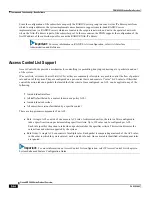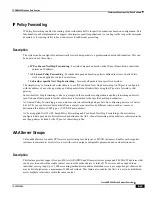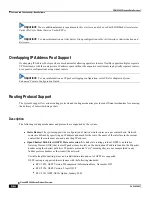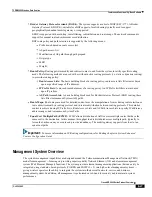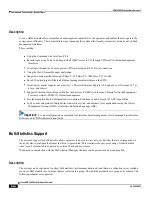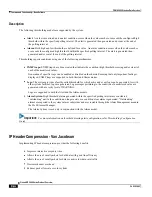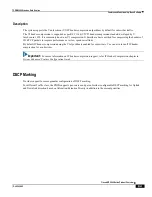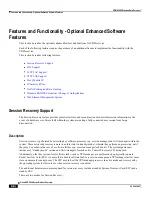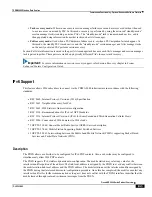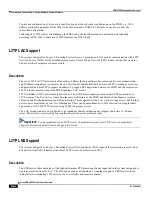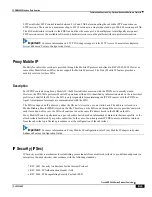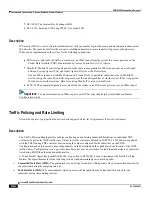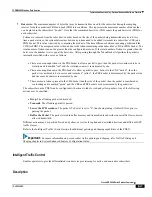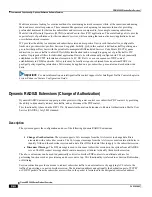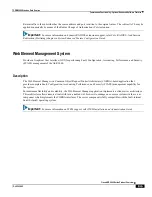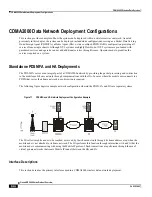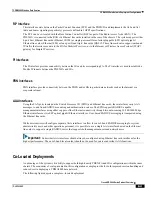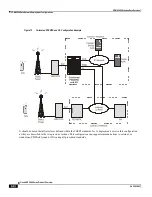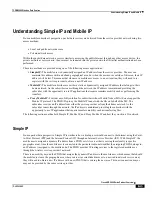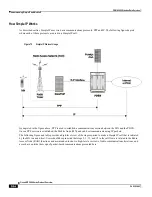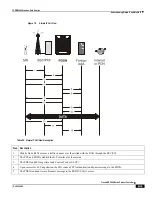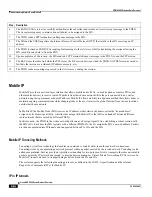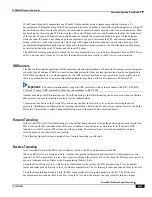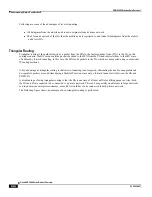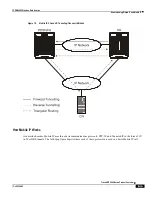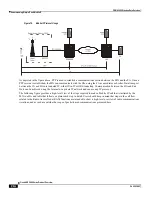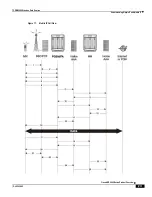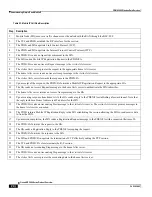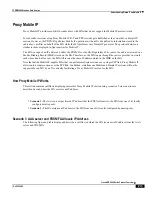
CDMA2000 Wireless Data Services
▀ Features and Functionality - Optional Enhanced Software Features
▄ Cisco ASR 5000 Series Product Overview
OL-22938-02
Mobile carriers are looking for creative methods for maximizing network resources while, at the same time, enhancing
their end users overall experience. These same mobile operators are beginning to examine solutions for providing
preferential treatment for their native subscribers and services as compared to, for example, roaming subscribers,
Mobile Virtual Network Operators (MVNOs) and/or Peer-to-Peer (P2P) applications. The overall end goal is to provide
superior levels of performance for their customers/services, while ensuring that non-native users/applications do not
overwhelm network resources.
ITC provides the ability to examine each subscriber session and respective flow(s) such that selective, configurable
limits on a per-subscriber/per-flow basis can be applied. Initially, QoS in this context is defined as traffic policing on a
per-subscriber/per-flow basis with the potential to manipulate Differentiated Services Code Points (DSCPs), queue
redirection (i.e. move traffic to a Best Effort (BE) classification) and/or simply dropping out of profile traffic. ITC
enables 5 tuple packet filters for individual application flows to be either manually configured via CLI or dynamically
established via RSVP TFT information elements in 1xEV-DO Rev A or as a consequence of PDP context
establishments in CDMA networks. Policy rules may be locally assigned or obtained from an external PCRF via
push/pull policy signaling interactions. Policies may be applied on a per-subscriber, per-context and/or chassis-wide
basis.
Important:
For more information on intelligent traffic control support, refer Intelligent Traffic Control chapter in
System Enhanced Feature Configuration Guide
.
Dynamic RADIUS Extensions (Change of Authorization)
Dynamic RADIUS extension support provide operators with greater control over subscriber PDP contexts by providing
the ability to dynamically redirect data traffic, and or disconnect the PDP context.
This functionality is based on the RFC 3576, Dynamic Authorization Extensions to Remote Authentication Dial In User
Service (RADIUS), July 2003 standard.
Description
The system supports the configuration and use of the following dynamic RADIUS extensions:
Change of Authorization
: The system supports CoA messages from the AAA server to change data filters
associated with a subscriber session. The CoA request message from the AAA server must contain attributes to
identify NAS and the subscriber session and a data filter ID for the data filter to apply to the subscriber session.
Disconnect Message:
The DM message is used to disconnect subscriber sessions in the system from a RADIUS
server. The DM request message should contain necessary attributes to identify the subscriber session.
The above extensions can be used to dynamically re-direct subscriber PDP contexts to an alternate address for
performing functions such as provisioning and/or account set up. This functionality is referred to as Session Redirection,
or Hotlining.
Session redirection provides a means to redirect subscriber traffic to an external server by applying ACL rules to the
traffic of an existing or a new subscriber session. The destination address and optionally the destination port of TCP/IP
or UDP/IP packets from the subscriber are rewritten so the packet is forwarded to the designated redirected address.
Summary of Contents for ASR 5000 Series
Page 1: ......
Page 26: ......
Page 48: ...New In Release 10 0 SCM Features Cisco ASR 5000 Series Product Overview OL 22938 02 ...
Page 50: ......
Page 58: ......
Page 68: ......
Page 126: ......
Page 138: ......
Page 146: ......
Page 218: ......
Page 236: ......
Page 356: ......
Page 374: ......
Page 422: ......
Page 496: ......
Page 572: ......
Page 654: ......
Page 700: ......
Page 726: ......
Page 784: ......
Page 816: ......
Page 844: ......
Page 906: ......
Page 926: ......
Page 942: ......
Page 943: ...Cisco ASR 5000 Series Product Overview OL 22938 02 Chapter 30 Technical Specifications ...
Page 966: ......
Page 972: ......

